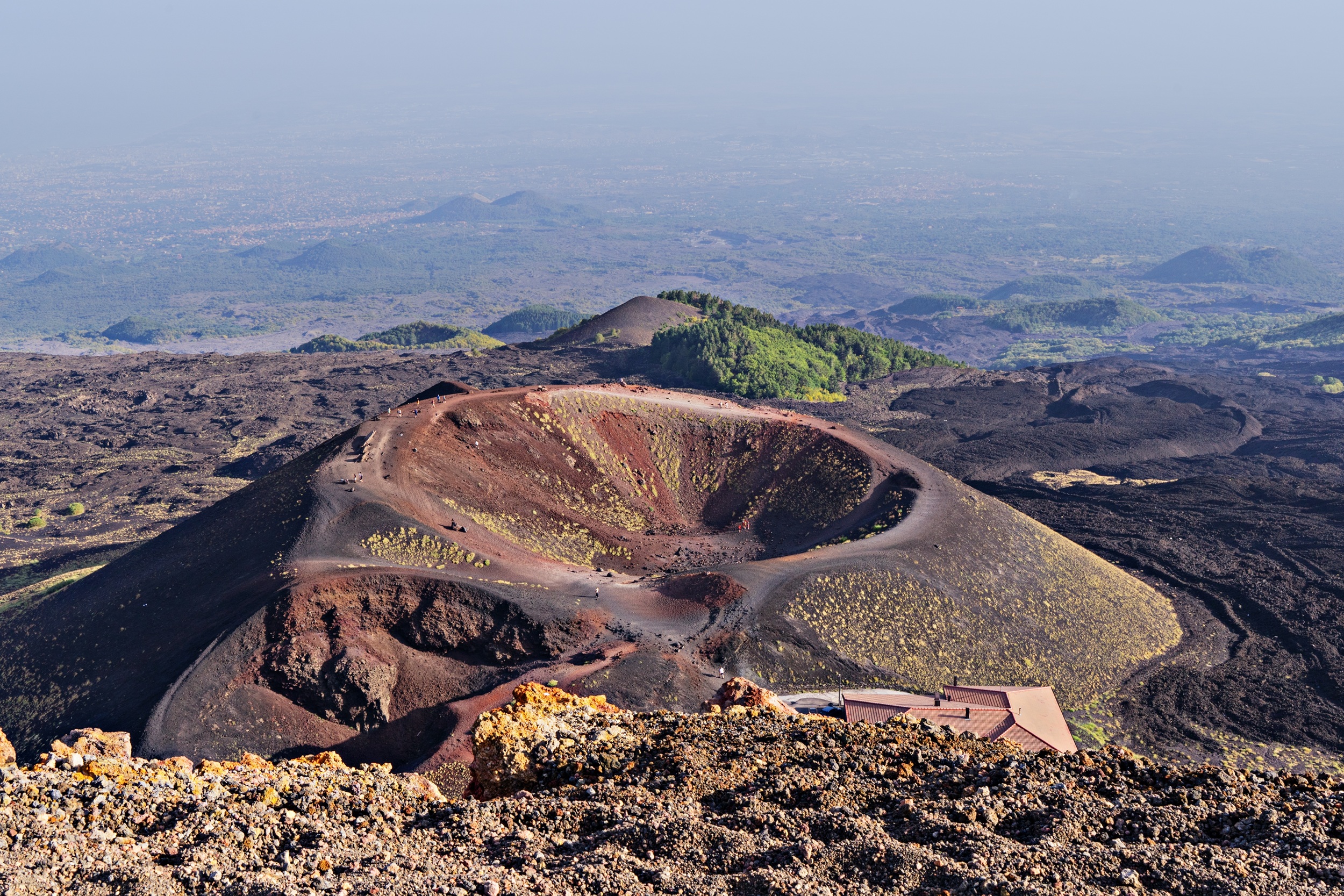Etna is the tallest, most active, and most fascinating volcano in all of Europe.
From its summit — 3,350 meters above sea level — you can admire the deep blue sea below, the fire and smoke rising from its crater into the sky, and for much of the year, snow-covered peaks gleaming in the sun.
Its origins likely date back around 500,000 years, to submarine eruptions that gradually gave birth to the mighty volcano we know today.
Over the course of 150,000 years, Etna took shape — constantly changing, yet eternally alive.
Ways to Experience Mount Etna
The best way to admire Etna is from above, on a helicopter flight that reveals its grandeur and scale.
But you can also explore it from the ground, starting from Rifugio Sapienza, then ascending by cable car, off-road vehicle, or even on foot.
At the top, the scenery is almost lunar — no trees, only grey ash and black volcanic rocks, accompanied by the distant rumble of the volcano beneath your feet.
Etna in Myth and History
The Greek poet Pindar was among the first to describe an eruption of Etna:
“From the depths of the mountain spring the purest sources of fire that cannot be seen.”
In Greek mythology, Hephaestus, the god of fire, used Etna’s crater as his workshop, forging divine weapons and tools:
Achilles’ armor, Hermes’ winged sandals, Apollo’s bow, the Sun’s chariot, Eros’ arrows, and Zeus’ thunderbolts — all crafted from silver, bronze, and gold.
According to Homer, the lame god Hephaestus was assisted by two golden maidens, “similar to living girls,” who helped him move about his forge.
Etna’s Eruptions Through the Centuries
During the 18th century, Etna erupted sixteen times; in the 19th, nineteen.
The more recent ones are countless — the sky suddenly turns red, black ash rains from above, and the entire landscape changes color.
Streams of molten lava flow down into the Valle del Bove, and sometimes even reach Catania, leaving traces of their passage in homes, gardens, and at the port.
Both Catania and Acireale were built entirely from Etna’s lava stone — grey, black, and powerful, echoing the volcano’s essence in every wall and street.
Exploring Etna’s Landscape
In 1983, for the first time, engineers used explosives to divert lava flows, protecting nearby towns from destruction — a remarkable human intervention on nature’s power.
A small train circles the base of Etna, passing through ancient lava fields and lush valleys.
The 3-hour journey offers breathtaking views of this extraordinary landscape.
According to legend, the fairy Morgana once hosted her brother King Arthur in her palace among Etna’s woods, surrounded by oaks, chestnut trees, pistachios, and mushrooms.
Life on the Volcano
Where volcanoes once raged, the soil is now incredibly fertile.
The town of Bronte, on Etna’s slopes, is famous for its pistachios, used in pesto, pastries, and the island’s legendary pistachio gelato.
A century ago, wolves, deer, and roe still roamed here — now replaced by porcupines, foxes, wildcats, hares, weasels, rabbits, and hedgehogs, easily spotted in the park’s quiet areas.
To the north lies the Alcantara River Park, between Catania and Messina, filled with waterfalls, pools (the “gurne”), and spectacular lava gorges carved by time.
Near Sant’Alfio, stands a thousand-year-old chestnut tree, known as the “Chestnut of the Hundred Horses.”
Legend says that one stormy night, Queen Joanna of Aragon took shelter beneath its massive branches along with her hundred knights —
or, according to gossip, her hundred lovers.





Comments are closed